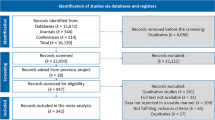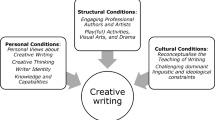Abstract
The term “gender-inclusive” has become well known in Australian education since the late 1980s. In policy terms, it is associated with an education structured to value girls and women, their knowledge and experience, equally with that of boys and men. This paper reports an analysis of the gender-inclusivity of teaching and learning activities in a combined Year 2/3 class studying an integrated, science and technology topic themed about pirates. The data include field notes from class visits, interviews with the teacher, informal conversations with children, a videotape recording of one class and inspection of children's work. The content of an inherently gendered topic, like pirates, provides teachers with opportunities to challenge the structure of gender in ways that enable children to begin to understand how males and females are positioned in the prevailing discourse and how some groups are privileged over others. In this Year 2/3 class, the teacher was able to help children to develop different views of, in this case, who pirates are, what they might do, and what a more socially just pirate existence might be like. Opportunities to challenge the gendered way we think about things, even pirates, are taken too infrequently in our classrooms.
Similar content being viewed by others
References
Australian Education Council. (1993). National action plan for the education of girls, 1993–1997. Carlton, Victoria: Curriculum Corporation.
Boyatzis, C. J., & Eades, J. (1999). Gender differences in preschoolers' and kindergartners' artistic production and preference. Sex Roles: A Journal of Research, 41, 627–638.
Curriculum Council. (1998). Curriculum framework for kindergarten to year 12 in Western Australia. Perth,Western Australia: Author.
Gianello, L. (Ed.). (1988). Getting into gear: Gender-inclusive teaching strategies in science developed by the McClintock Collective. Canberra, ACT: Curriculum Development Corporation.
Hildebrand, G. (1989). Creating a gender-inclusive science education. The Australian Science Teachers' Journal, 35(3), 7–16.
Johnson, C. C. (1998). A general history of the robberies and murders of the most notorious pirates. London: Conway Maritime Press. (This edition is based on the 1925 text of a book written in 1724. Anne Bonney and Mary Read each have one of the 20 biographical chapters on famous pirates.)
Kimbell, R., Stables, K., & Green, R. (1996). Understanding practice in design and technology. Buckingham, UK: Open University Press.
Marshall, N. L., Robeson, W. W., & Keefe, N. (1999). Gender equity in early childhood. Young Children, 54(4), 9–13.
Murphy, P. (1993). Gender differences in pupils' reactions to practical work. In R. McCormick, P. Murphy,& M. Harrison (Eds.), Teaching and learning technology (pp. 143–154).Wokingham, UK: Addison-Wesley.
Nikola-Lisa, W. (1993). Pirates, pirates over the salt, salt sea. Children's Literature in Education, 24, 101–114.
Rennie, L. J. (2001a). Gender equity and science teacher preparation. In D. R. Lavoie & W.-M. Roth (Eds.), Models of science teacher preparation (pp. 127–147). Dordrecht, The Netherlands: Kluwer Academic Publishers.
Rennie, L. J. (2001b). Teacher collaboration in curriculum change: The implementation of technology education in the primary school. Research in Science Education, 31, 49–69.
Tuman, D. M. (1999). Gender styles as form and content: An examination of gender stereotypes in the subject preference of children's drawing. Studies in Art Education, 41, 40–60.
Wellhousen, K. (1996). Girls can be bull riders, too! Supporting children's understanding of gender roles through children's literature. Young Children, 51(5) 79–83.
Witt, S. D. (2000). The influence of television on children's gender role socialisation. Childhood Education, 76, 322–324.
Author information
Authors and Affiliations
Rights and permissions
About this article
Cite this article
Rennie, L.J. “Pirates Can Be Male or Female”: Investigating Gender-Inclusivity in a Years 2/3 Classroom. Research in Science Education 33, 515–528 (2003). https://doi.org/10.1023/B:RISE.0000005253.72282.f4
Issue Date:
DOI: https://doi.org/10.1023/B:RISE.0000005253.72282.f4




